Coventry God Cakes are sweet mincemeat puff pastry turnovers. They are an English treat traditionally enjoyed around New Year and they make great use of leftover Christmas mincemeat.
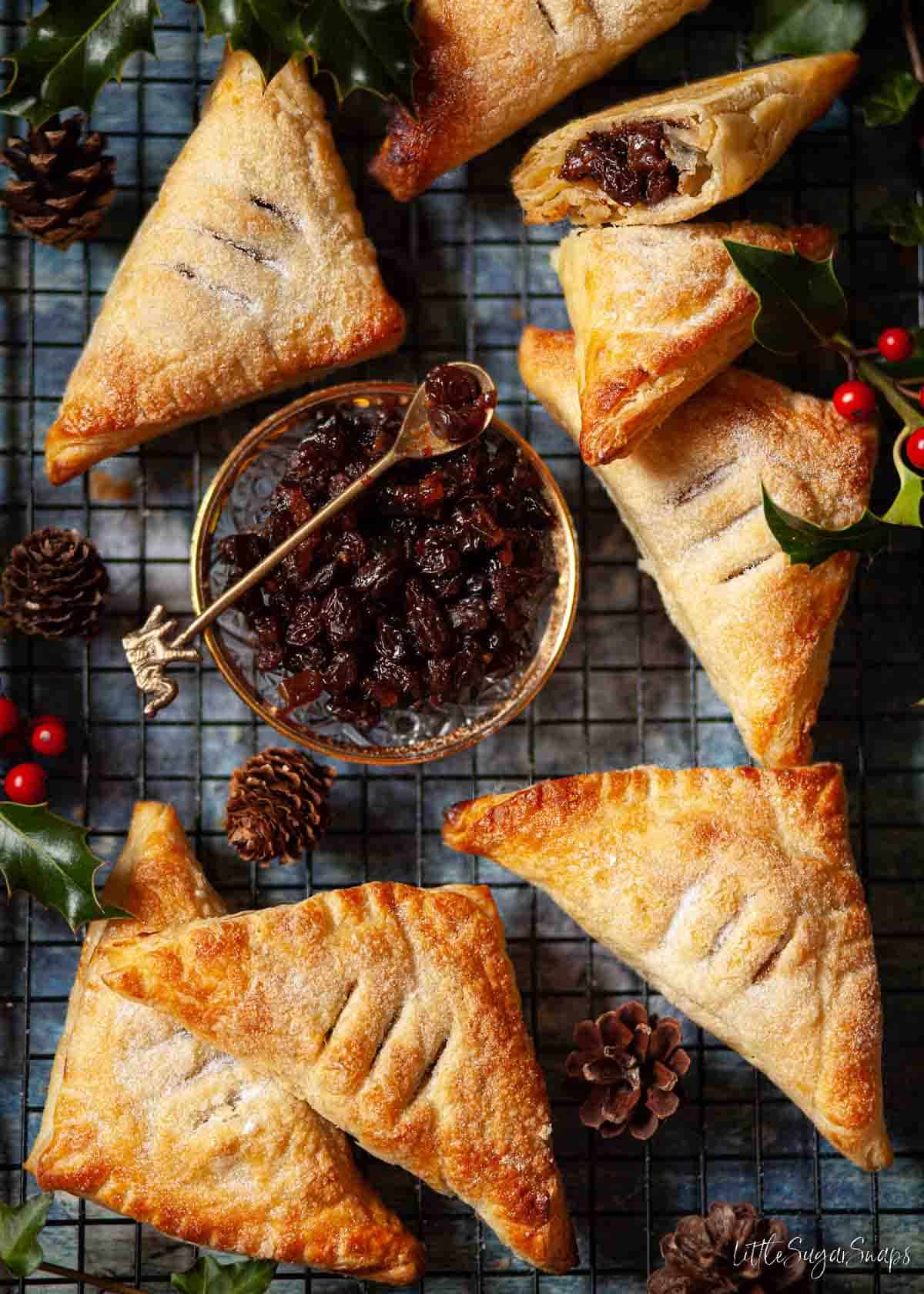
Have you heard of Coventry God Cakes? They are mincemeat puff pastry turnovers traditionally enjoyed around New Year. They are a delight.
God cakes are a simple bake, especially when made using store-bought puff pastry. They are essentially individual triangular-shaped pastries filled with juicy mincemeat and dusted in caster sugar.
Coventry God Cakes are a new discovery for me, unearthed whilst collating my collection of recipes from the East and West Midlands. I’m thrilled to have discovered them because these God Cakes are delicious and they do, of course, make short work of using up any lingering jars of Christmas mincemeat.
What are God Cakes?
God cakes (or Godcakes) are a sweet bake comprising puff pastry holding a filling of mincemeat with an extra splash of brandy or rum mixed in. They have a distinctive appearance:
- Godcakes are shaped into isosceles triangles.
- And they have three slits cut into the top.
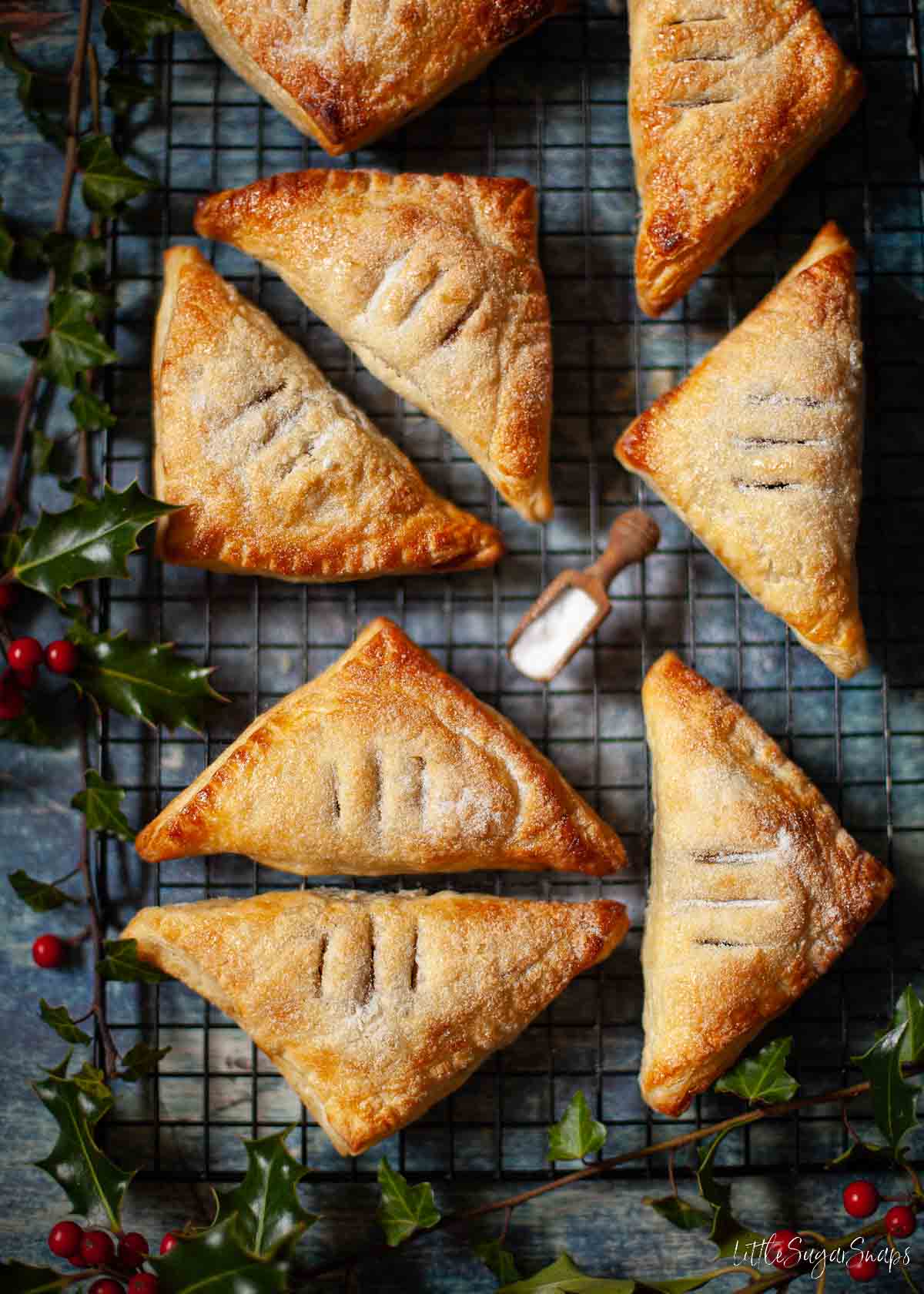
You would be forgiven for thinking that Coventry Godcakes are just a triangular version of an Eccles cake or Chorley cake, but they are a different entity for two reasons:
- Godcakes contain mincemeat whereas Eccles cakes and Chorley cakes contain currants mixed with sugar.
- Coventry Godcakes have their roots firmly planted in the West Midlands region whereas both Eccles and Chorley cakes are from the North West of England.
Here’s a little more information about them.
Where exactly are Godcakes from?
Here’s a conundrum. Should Coventry God Cakes be classified as a Warwickshire recipe or a recipe from the West Midlands county?
God cakes have been knocking around Coventry since the Middle Ages. Back then, Coventry was classified as being located within the county of Warwickshire. Fast forward to 1974 and suddenly things change. Coventry became part of the West Midlands county in this year. Hmmm…
Hand on heart, I think that we should hand over the glory award of the Coventry God Cake to Warwickshire. But are you from either of these two counties? Perhaps you have a different point of view?
When were Godcakes invented?
Evidence suggests that the gifting of God Cakes was common in Coventry as far back as the 14th Century. Quite why it didn’t catch on throughout the rest of the Midlands, or England for that matter, is anybody’s guess.
What is the purpose of a Godcake?
Coventry God Cakes were traditionally given by Godparents to their Godchildren around New Year, along with a blessing for the year ahead. They were a gift symbolising good luck.
Godcakes came in a variety of sizes, with various prices to match. This meant that these lovely mincemeat turnovers were an accessible tradition for all social classes to enjoy.
Are they religiously symbolic?
God Cakes are, apparently, symbolic of the Holy Trinity. Their triangular shape and the three slits across the top are both said to represent the Holy Trinity and the repetition of prayers three times.
Why you’ll enjoy Coventry Godcakes
There are a number of reasons why whipping up a round of God Cakes is a good idea:
- My recipe uses a simple version of rough puff pastry which is not quite so intimidating to make as classic puff pastry.
- You can choose your favourite mincemeat to include, whether that’s homemade or store-bought.
- Although delicious when served just as they are with a cup of tea or coffee, Coventry God Cakes also make a lovely dessert served with custard, cream or ice cream (try them warm).
- These mincemeat puff pastry turnovers make a welcome change from mince pies.
- If made using store-bought pastry and ready-made mincemeat, then God Cakes are a quick and simple traditional British bake to make.
- Although they emanate from Catholicism there’s nothing to stop anybody enjoying them, regardless of faith or atheist beliefs.
But perhaps my favourite reason for urging you to make Coventry God Cakes is that these delicious mincemeat turnovers are steeped in history. This makes them a fantastic talking point – try serving them at your New Year celebrations and see where the conversation leads you.
Ingredients notes
Flour: rough puff pastry needs plain flour. Self-raising flour contains baking powder, which is not welcome in this recipe, so please do not make the mistake of using it.
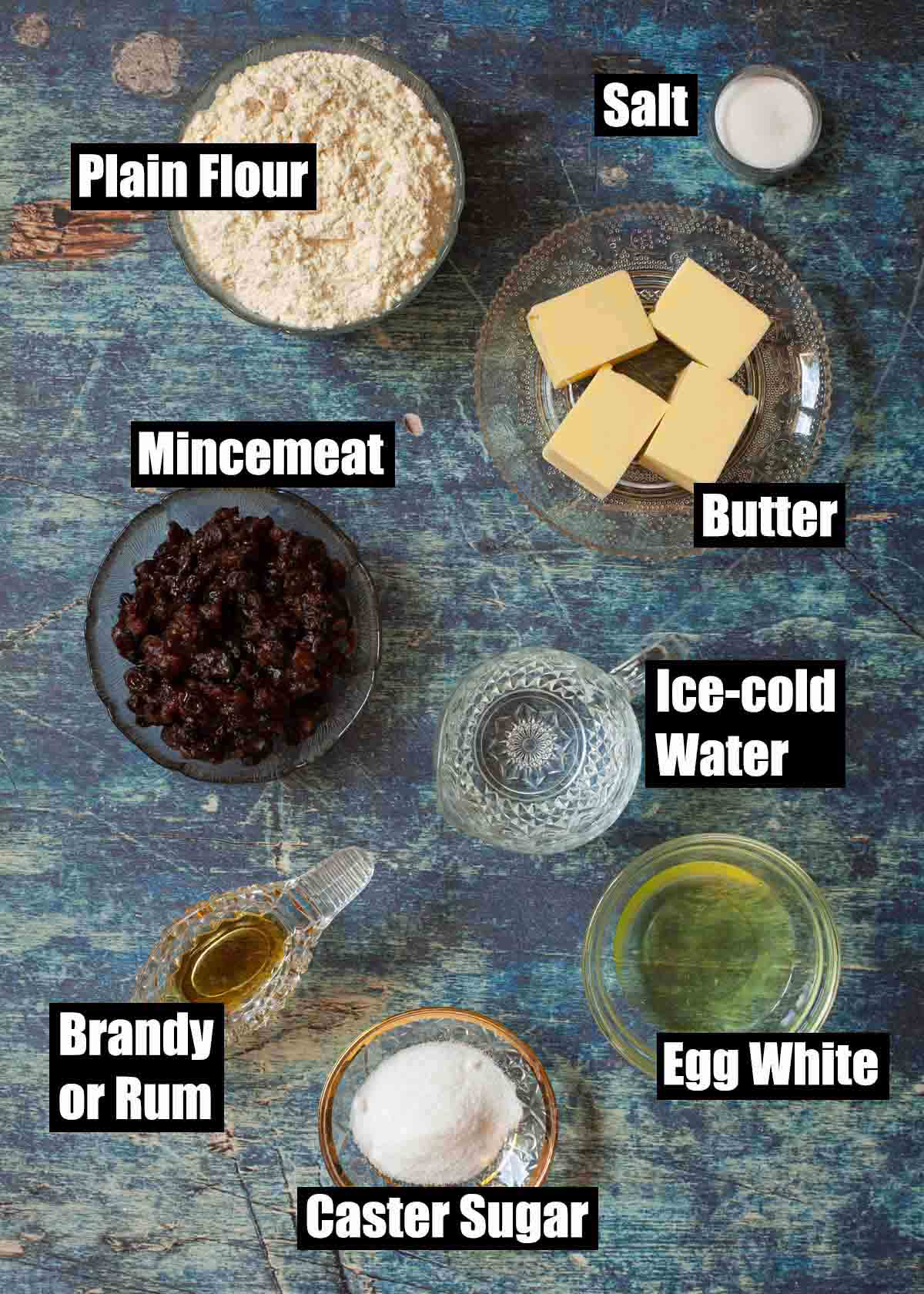
Butter: for the richest flavoured puff pastry turnovers use proper butter. Those requiring vegan or dairy-free pastry can opt for vegan block butter but do add an extra pinch of salt to boost the flavour.
Please do not use baking margarine as the water content in this product makes it unsuitable for making rough puff pastry.
Mincemeat: this can be homemade or store-bought. I have a great recipe for cherry mincemeat. It’s a real crowd-pleaser and it’s suitable for vegetarians and vegans.
Alcohol: traditional recipes for Coventry Godcakes stipulate the addition of either brandy or rum to the mincemeat. If you’re undecided which one to use check the ingredients in your mincemeat. If it’s brandy-based go with a splash of brandy or if it’s rum-based, used that instead.
Step-by-step instructions
Making these mincemeat puff pastry turnovers is easy. I’ve broken the steps down into 2 stages. If you are using store-bought pastry then skip straight to the second stage of assembling your Coventry God Cakes.
Full instructions and measurements are given in the printable recipe card at the end of this post.
Stage 1: Make the rough puff pastry
- Divide the butter into 4 equal portions.
- Put the flour and salt into a bowl and stir briefly. Cube 1 portion of the butter and rub it into the flour.
- Pour in ¾ of the water.
- Use a blunt knife to mix everything into a soft dough, adding more of the water as necessary (do not add so much that the dough turns sticky).
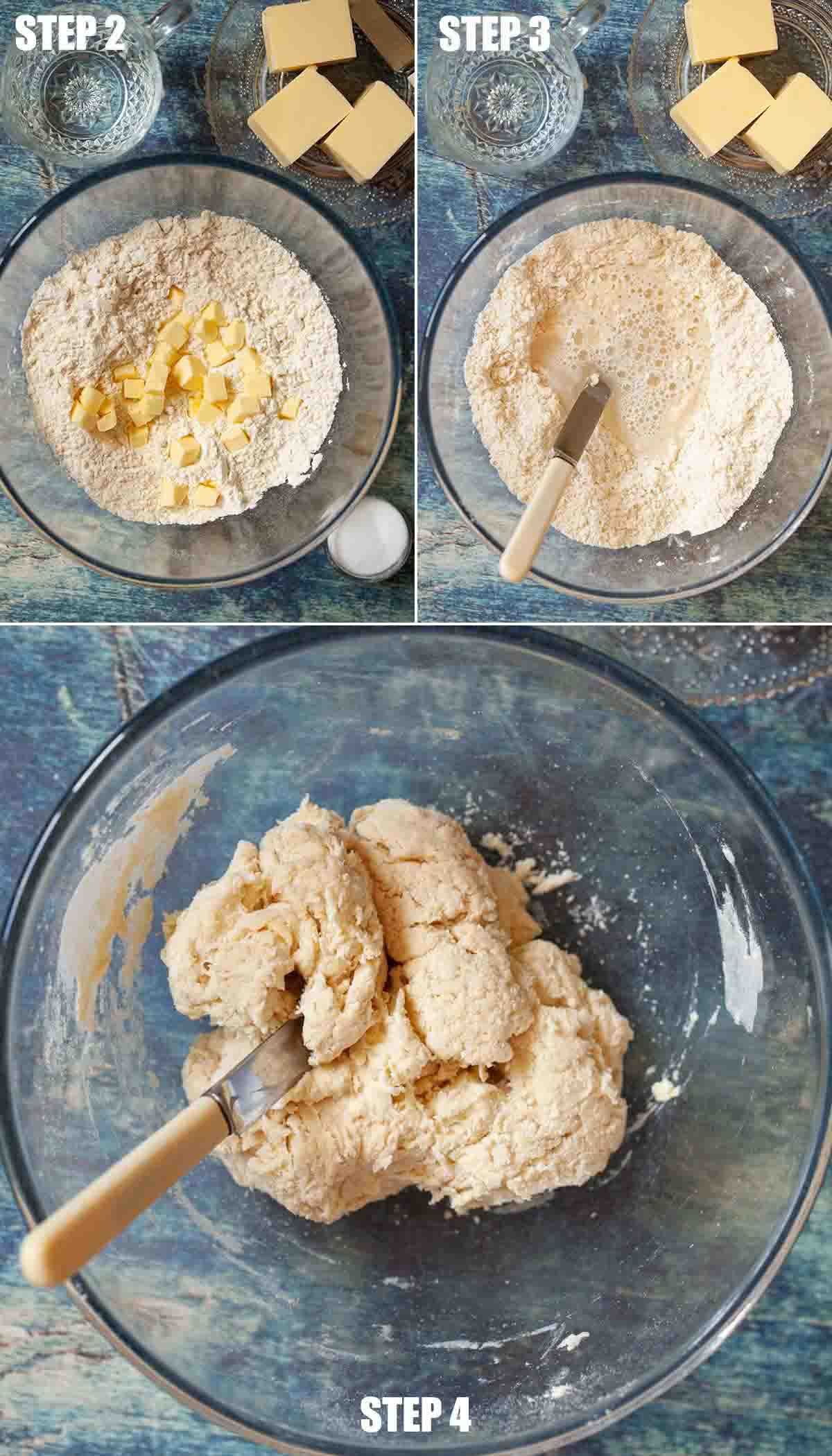
- Next, roll the dough into a long rectangle on a lightly floured worktop to approximately 4mm thick. Cube another portion of the butter and scatter it over ⅔ of the dough, leaving the final ⅓ empty.
- Fold the empty third of the dough over the top of the dough, bringing it to the centre.
- Fold the other end of the pastry over the top, then rotate the pastry 90 degrees.
- Roll the pastry into an oblong again and repeat the folding in steps 5-7 (but do not add more butter at this stage. Repeat once more, then cover the dough and chill for 20 minutes.
- Repeat steps 5-8 twice more to incorporate the 2 remaining portions of butter.
- Chill the pastry for 1 hour in the fridge.
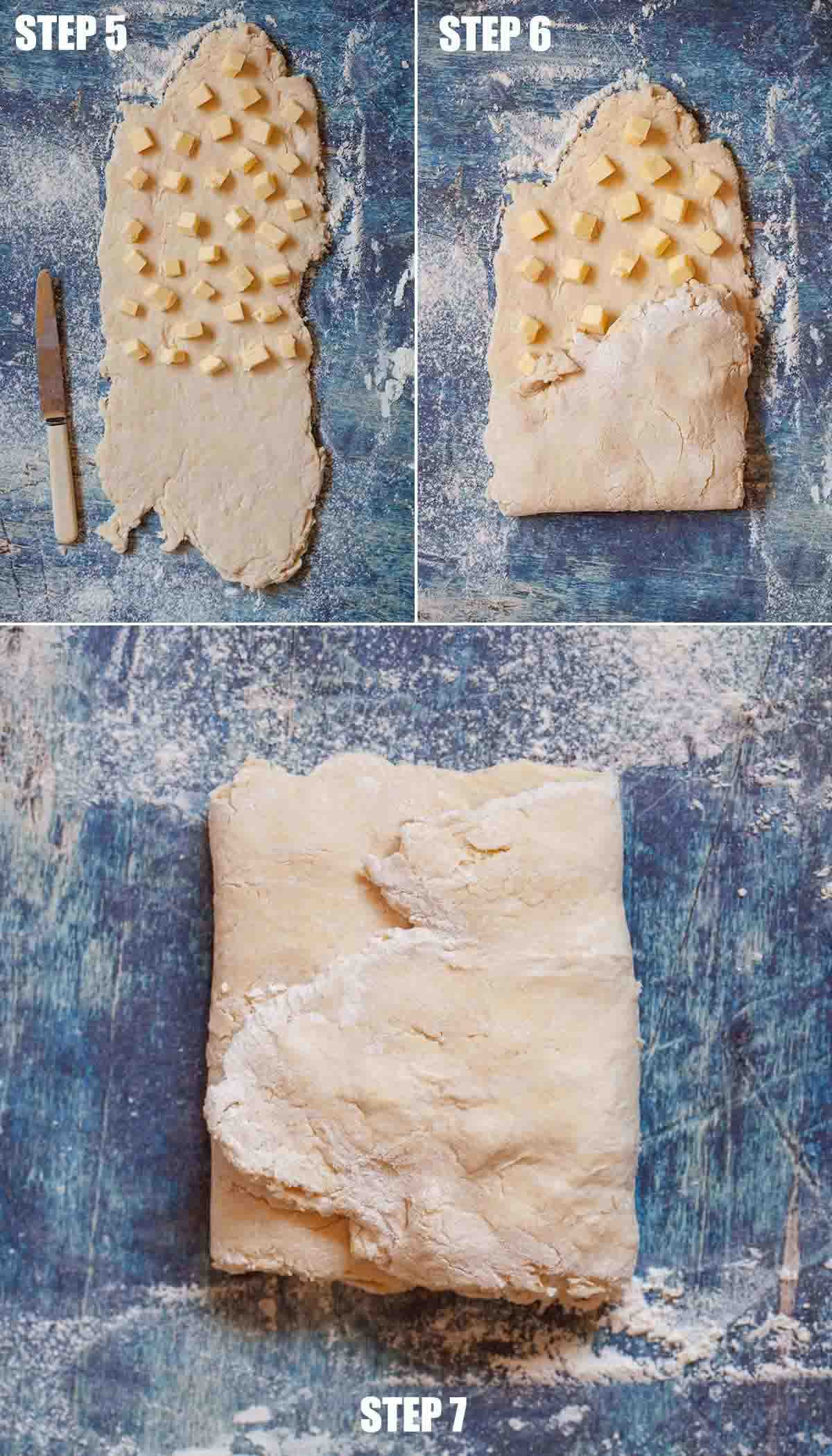
Stage 2: Assembling Coventry God Cakes
- Mix the brandy/ rum into the mincemeat.
- On a lightly floured worktop roll the pastry out into an oblong approximately 20cm x 40cm. Trim the edges to neaten and cut it into 8 squares each measuring 10cm x 10cm.
- Discard to scraps of pastry.
- Divide the mincemeat between the squares of pastry. Lightly brush 2 adjacent edges of each square with water and fold over to form a triangle. Press lightly to seal.
- Transfer the Godcakes to a lined baking sheet, then brush each one with beaten egg white and use a sharp knife to cut 3 slits (approximately 2cm long) into the top of each one. You can also use the knife to make impressions along the edges of each turnover (optional).
- Scatter caster sugar over the top and bake for 20 minutes, rotating the baking sheet halfway through the cooking time.
- When the Godcakes look nicely golden, transfer them to a wire rack to cool.
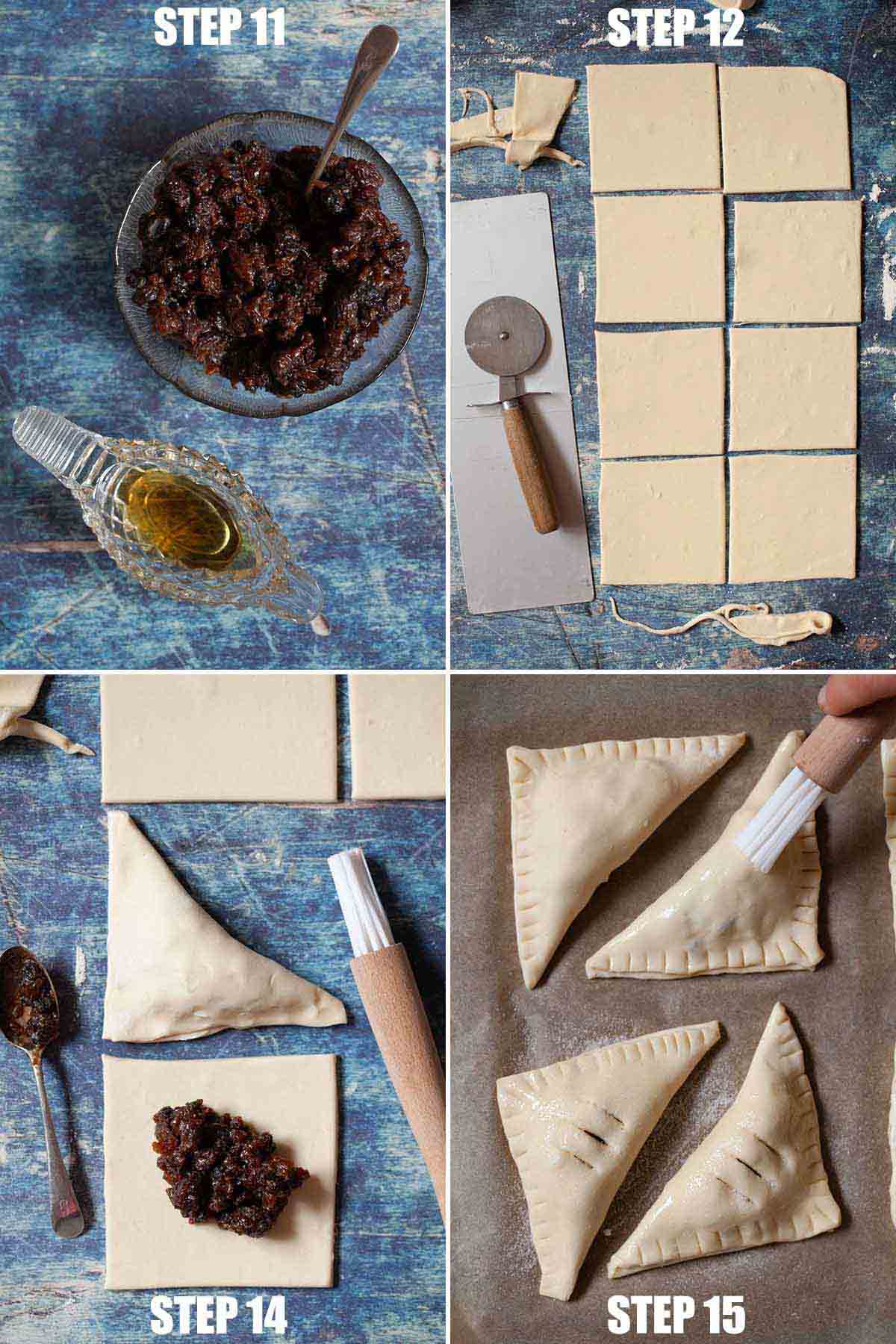
Expert tips
- If you don’t have the time or inclination to make your own pastry, store-bought puff pastry can be used instead. You’ll need a 500g block.
- Remember to chill the pastry dough properly between each addition of butter and before rolling out to assemble these mincemeat puff pastry turnovers. The pastry is much easier to handle when sufficiently chilled and will give a better bake too.
- Ensure that you roll your pastry to the right dimensions (20cm x 40cm) to enable 8 squares to be cut from it.
- Use a clean ruler as a guide to cut the pastry neatly (or the edge of the base of an oblong tart tin (pictured in step 12) if you have one to hand).
- Don’t be tempted to over-fill each turnover as they will split open, letting the mincemeat burst out during cooking. Around 2 teaspoons of filling in each one is plenty.
- It’s a good idea to divide the mincemeat between the eight pastry squares before sealing any of them to ensure that the filling is evenly distributed across them all.
- Use a very sharp knife to cut the slits into the top of each God Cake. A serrated paring knife is a good option.
- It’s not necessarily traditional to cut indents along the edge of the God cakes. It does give them a more polished look, but you can skip this step if desired.
- These mincemeat turnovers store well at room temperature (in an airtight container) for up to three days.
Frequently asked questions
Yes, you can. To make vegan God Cakes swap the butter for vegan block butter, use vegan mincemeat and use a dairy-free milk alternative to glaze the top of the pastries in place of the beaten egg white. Also, ensure that the caster sugar is vegan (not all sugars are).
If using store-bought pastry ensure that it is vegan.
Yes, you can. To do so you’ll need to use gluten-free flour to make the pastry or find some gluten-free ready-made pastry. Check that the mincemeat is also gluten-free.
Yes, they can. It’s best to cook them, let them cool completely and then open freeze them. Once fully frozen, slide the Godcakes into a freezer bag (don’t forget to label and date them). Store for up to 3 months, then defrost at room temperature and reheat for around 10 minutes at 150C/ 300F/ GM2.
Ha ha, yes! The term Godcake is used to describe the triangle of grass that is sometimes created at junctions on country lanes as the road splits to the left and right. It will come as no surprise to hear that the term originated in Warwickshire and came about because of the triangular shape of the Coventry God Cake.
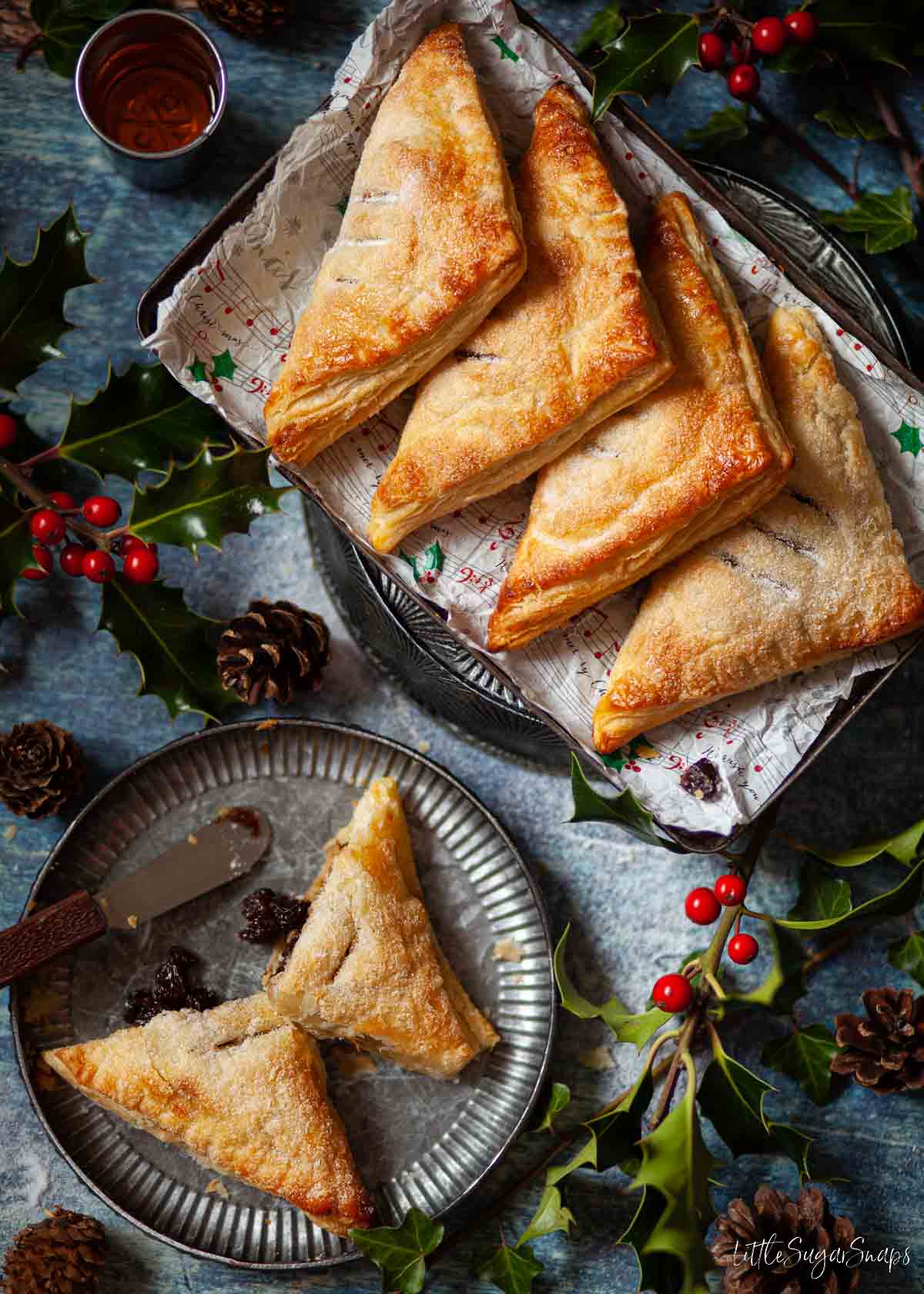
More Midlands recipes

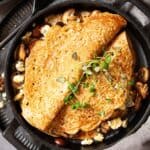
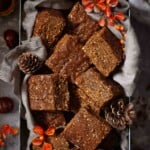
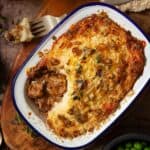
Have you made this recipe for Coventry God Cakes? Please give it a rating or leave a comment – I love to hear how you get along with my creations.
Why not sign up to receive LittleSugarSnaps newsletters to hear when new recipes are published? You’ll get a free welcome e-book with my top baking tips and 5 favourite cake recipes. Or stay in touch on Facebook, Instagram or Pinterest.
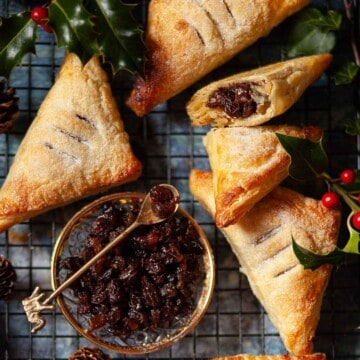
Coventry God Cakes
Ingredients
- 200 g Plain flour (all-purpose)
- 150 g Butter hard
- ¼ teaspoon Salt
- 125 ml Water ice-cold
- 250 g Mincemeat (fruit mince)
- 1 tablespoon Brandy or rum
- Beaten egg white to glaze
- 1 tablespoon Caster sugar
Instructions
Make the rough puff pastry
- Divide the butter into 4 equal portions.
- Put the flour and salt into a bowl and stir briefly. Cube 1 portion of the butter and rub it into the flour.
- Pour in ¾ of the water and use a blunt knife to mix everything into a soft dough, adding more water as necessary (do not add so much that the dough turns sticky).
- Next, roll the dough into a long rectangle on a lightly floured worktop to approx 4mm thick. Cube another portion of the butter and scatter it over ⅔ of the dough, leaving the final ⅓ empty.
- Fold the empty third of the dough over the top of the dough, bringing it to the centre. Fold the other end of the pastry over the top, then rotate the pastry 90 degrees.
- Roll the pastry into an oblong again and repeat the folding in step 5 (but do not add more butter at this stage. Repeat once more, then cover the dough and chill for 20 minutes.
- Repeat steps 4-6 twice more to incorporate the 2 remaining portions of butter.
- Chill the pastry for 1 hour in the fridge.
Assemble the Godcakes
- Preheat the oven to 220C/ 425F/ GM 7 and line a baking sheet with baking parchment.
- On a lightly floured worktop roll the pastry out into an oblong approximately 20cm x 40cm. Trim the edges to neaten and cut it into 8 squares each measuring 10cm x 10cm.
- Mix the brandy/ rum into the mincemeat and divide it between the squares of pastry.
- Lightly brush 2 adjacent edges of each square with water and fold over to form a triangle. Press lightly to seal.
- Transfer the Godcakes to the lined baking sheet, then brush each one with beaten egg white and use a sharp knife to cut 3 slits (approx 2cm long) into the top of each one. You can also use the knife to make impressions along the edges of each turnover (optional).
- Scatter caster sugar over the top
- Bake for 10 minutes then turn the oven temperature down to 200C/ 400F/ GM 6 and rotate the baking sheet to ensure all turnovers bake evenly.
- Cook for another 10-15 minutes until golden and the pastry is cooked through then transfer them to a wire rack to cool.
Notes
- If you don’t have the time or inclination to make your own pastry, storebought puff pastry can be used instead. You’ll need a 500g block.
- Remember to chill the pastry dough properly between each addition of butter and before rolling out to assemble these mincemeat puff pastry turnovers. The pastry is much easier to handle when sufficiently chilled and will give a better bake too.
- Ensure that you roll your pastry to the right dimensions (20cm x 40cm ) to enable 8 squares to be cut from it.
- Use a clean ruler as a guide to cut the pastry neatly (or the edge of the base of an oblong tart tin (pictured in step ***) if you have one to hand).
- Don’t be tempted to over-fill each turnover as they will split open, letting the mincemeat burst out during cooking. Around 2 teaspoons of filling in each one is plenty.
- It’s a good idea to divide the mincemeat between the eight pastry squares before sealing any of them to ensure that the filling is evenly distributed across them all.
- Use a very sharp knife to cut the slits into the top of each God Cake. A serrated paring knife is a good option.
- It’s not necessarily traditional to cut indents along the edge of the God cakes. It does give them a more polished look, but you can skip this step if desired.

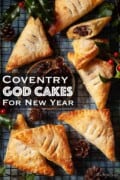
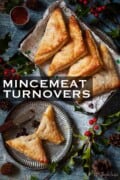
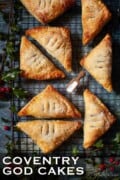
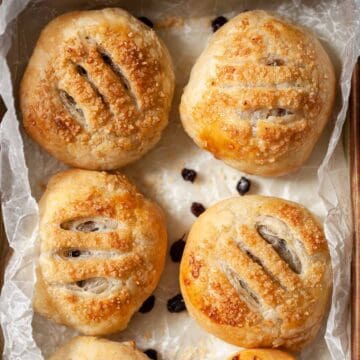
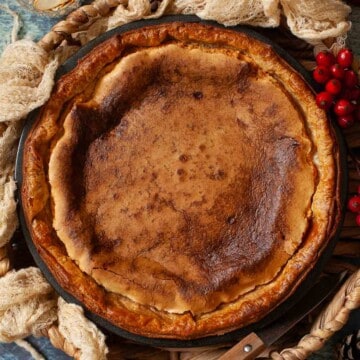
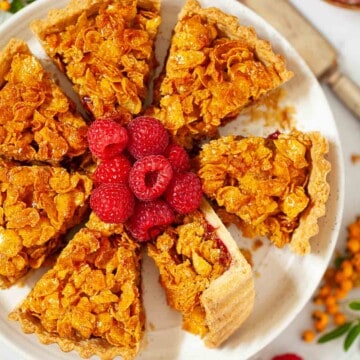
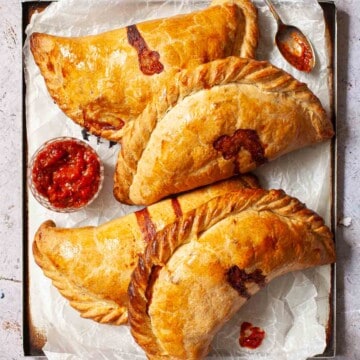
Leave a Reply